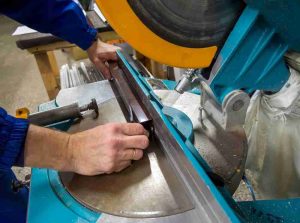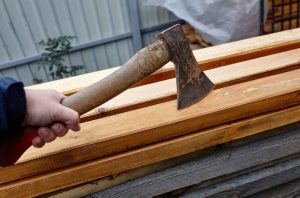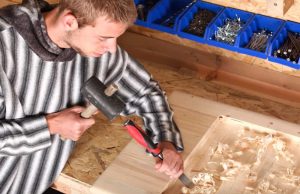Ah, the drywall mudding and sanding stage. It’s the bridge between rough construction and a beautiful, paint-ready surface. You’ve meticulously applied joint compound (often called “drywall mud”) to seams, corners, and screw holes, smoothing out imperfections.
Now comes the crucial question that tests every DIYer’s and pro’s patience: How long before sanding drywall mud?
Sand too soon, and you’ll create a gummy mess, gouge your work, and potentially need to start over. Waiting too long while it won’t harm the mud unnecessarily delays your project. Getting this timing right is fundamental to achieving that smooth, professional finish you’re aiming for.
This comprehensive guide dives deep into the factors influencing drying time, provides clear guidelines, signs to look for, and best practices to ensure your sanding session is a success, not a setback.
Understanding Drywall Mud: The Foundation
Before we talk timing, let’s quickly understand what we’re working with. Drywall mud, or joint compound, is a gypsum-based paste used to cover seams between drywall sheets, fill screw/nail dimples, and repair imperfections. The two most common types you’ll encounter are:
- Setting-Type Compound (“Hot Mud”): This comes as a powder that you mix with water. It chemically sets and hardens, similar to plaster, within a specific timeframe (e.g., 20, 45, 90, or 210 minutes – always check the bag!). It dries very quickly and is primarily used for pre-filling large gaps, patches, or in situations where speed is essential. It’s generally not the best choice for final skim coats due to its hardness and potential for showing sanding scratches.
- Drying-Type Compound (“Pre-Mixed” or “All-Purpose” / “Topping”): This comes ready-mixed in buckets or boxes. It dries through evaporation – the water content simply needs to leave the compound. This is the most common type used for the final coats (skim coats) over seams and for general finishing. This guide primarily focuses on the drying times for pre-mixed, drying-type compounds, as they are what most people use for the final sanding stage.
The Golden Rule: It Depends! (Factors Influencing Drying Time)
Unfortunately, there’s no single magic number that applies universally. The drying time for pre-mixed drywall mud before it’s ready to sand is influenced by several key factors:
Type of Compound:
- All-Purpose: Versatile, used for embedding tape and finishing coats. Dries relatively hard but slower than the topping compound. Typically requires 24 hours under average conditions.
- Topping Compound: Specifically designed for final skim coats. Dries harder, shrinks less, and sands easier than all-purpose. It often dries slightly faster (sometimes within 18-24 hours under ideal conditions) due to its formulation.
- Lightweight Compounds: Increasingly popular. They contain additives (like tiny bubbles or perlite) that make them lighter, easier to apply, and significantly faster drying. Some lightweight compounds can be sandable in as little as 12-18 hours under good conditions. Always check the manufacturer’s instructions on the bucket!
Thickness of Application:
This is critical. A thin skim coat over a sealed seam will dry much faster than a heavy fill coat patching a large hole. The thicker the mud, the longer it takes for the moisture deep within to evaporate. A heavy patch might take 48 hours or more, while a final skim coat might be ready in 24.
- Number of Coats: If you’re applying multiple coats (as is standard for seams – tape coat, fill coat, skim coat), each subsequent coat needs to dry completely before the next is applied. The final coat is the one you’re waiting to sand. Its drying time starts after the previous coat is dry.
- Substrate: Applying mud over bare drywall (which is porous) will allow some moisture to wick into the paper, potentially slowing initial drying slightly compared to applying over a previously sealed, primed, or painted surface. However, the thickness and environment remain the dominant factors.
Environmental Conditions (The Big Three):
Temperature: Warmth accelerates evaporation. Ideal drying temperatures are typically between 55°F and 75°F (13°C – 24°C). Below 55°F, drying slows dramatically. Above 85°F, the surface can dry too quickly, forming a skin that traps moisture underneath, which can lead to cracking or uneven drying.
Humidity: High humidity is the enemy of fast drying. When the air is already saturated with moisture, it has less capacity to absorb the water evaporating from the mud. In very humid conditions (above 70%), drying times can easily double or triple. Low humidity speeds things up.
Air Circulation: Stagnant air traps moisture around the mud surface. Good air movement (using fans, opening windows, or running HVAC) is essential to carry away the moist air and replace it with drier air, significantly speeding up evaporation. Avoid blowing air directly onto the mud surface while it’s still wet, as this can cause premature skinning or cracking. Aim for general room circulation.
General Drying Time Guidelines (Starting Points)
While “it depends” is the accurate answer, here are some general baseline expectations for pre-mixed, drying-type compounds under average conditions (approx. 70°F / 21°C, 50% humidity, moderate air circulation):
Thin Skim Coat (Final Coat over Seams/Small Repairs):
- Standard All-Purpose: 24 hours
- Topping Compound: 18-24 hours
- Lightweight Compound: 12-18 hours (Check product specs – some claim even less)
Medium Fill Coat (e.g., second coat over tape, filling moderate depressions):
- Standard All-Purpose: 24-36 hours
- Topping Compound: 24 hours
- Lightweight Compound: 18-24 hours
Thick Patch or Fill (e.g., large hole repair, deep embedding):
- Standard All-Purpose: 48 hours or more
- Topping Compound: 36-48 hours
- Lightweight Compound: 24-36 hours (Lightweight dries faster, but thick applications still take time)
Crucial Caveat: These are minimum estimates under ideal conditions. Always err on the side of caution. If conditions are cool, humid, or the air is still, add significant time (12-24+ hours).
The Real Test: How to Tell When Drywall Mud is Truly Dry and Ready to Sand
Relying solely on the clock is risky. The most reliable method is to physically test the mud:
Visual Inspection:
- Color Change: Dry mud will be a uniform, lighter, chalky white or off-white color. Wet mud appears darker and glossier. Look for any dark spots or shiny patches – these indicate trapped moisture.
- Consistency: The surface should look consistently matte and flat, not glossy or translucent in areas.
The Touch Test (Gentle!):
- Knuckle Test: Lightly press the flat of your knuckle against an inconspicuous area of the mud (like a corner or inside a closet). Do not use your fingertip, as it can leave a dent or mark easily.
- Feel: It should feel cool to the touch (like drywall or wood) and completely firm. There should be no softness, sponginess, or indentation. If it feels cool but slightly soft, it needs more time. If it feels damp or leaves any residue on your knuckle, it’s definitely not ready.
The Fingernail Test (Use with Extreme Caution):
- Only attempt this after the knuckle test confirms it feels completely firm and cool.
- In a very inconspicuous spot, gently try to scrape the surface with the edge of your fingernail.
- Ready: It should feel hard and powdery. Your nail might leave a faint white line, but it shouldn’t easily gouge, scrape off material, or feel gummy.
- Not Ready: If your nail easily digs in, scrapes off wet-looking material, or feels like it’s cutting into soft cheese, STOP! It needs significantly more drying time. Sanding now will ruin your work.
Remember: It’s better to wait an extra day than to sand too early. Patience is paramount for a flawless finish.
How Long Before Sanding Drywall Mud
Once you’ve confirmed the mud is bone dry, it’s sanding time! Follow these tips for the best results:
Prepare the Area:
- Dust Control is Paramount: Drywall dust is extremely fine and gets everywhere. Cover floors with plastic sheeting or rosin paper. Seal off doorways with plastic barriers and tape. Turn off your HVAC system or cover vents tightly. Wear a high-quality N95 respirator mask – this is non-negotiable for your health. Safety glasses are also essential.
- Lighting: Good lighting is critical. Use bright work lights positioned at an angle (raking light) across the walls. This casts shadows that reveal even the slightest imperfections you might miss with straight-on light.
Choose the Right Tools:
Sandpaper/Grit: Start with a medium grit (120-150) for initial smoothing and removing ridges. Finish with a finer grit (180-220) for a super-smooth surface ready for primer. Avoid very coarse grits (below 100) as they can leave deep scratches.
Sanding Tools:
- Hand Sander/Sanding Pole: A pole sander with a pivoting head is excellent for large, flat areas. Use for the bulk of the sanding.
- Hand Sanding Block: Essential for corners, edges, and detailed work where a pole sander is too bulky. A simple block with sandpaper wrapped around it works well.
- Sanding Sponge: Great for tight corners, curved surfaces, and feathering edges. Can be used wet or dry (dry is standard for drywall).
- Vacuum Sander (Optional but Recommended): These sanders connect to a shop vac, capturing the vast majority of dust at the source. They are a game-changer for dust control and efficiency.
Sanding Technique:
- Feather the Edges: The goal is to blend the repaired/mudded area seamlessly into the surrounding drywall. Focus on sanding the edges of the mud patch, gradually thinning it out until it disappears into the original wall surface. Avoid creating a noticeable ridge or “hump.”
- Use Long, Smooth Strokes: Whether using a pole or block, use long, overlapping strokes in a consistent direction (e.g., vertical or horizontal). Avoid short, choppy motions, which create unevenness.
- Light Pressure: Let the sandpaper do the work. Pressing too hard can gouge the mud or create grooves. Use a light touch, especially with finer grits.
- Check Frequently: Step back often under your raking light to inspect your progress. Wipe away dust with a dry cloth or brush (or a damp cloth very carefully if needed, but avoid soaking) to see the true surface. Look for shiny spots (indicating you’ve sanded through to the paper) or rough areas.
- Corners: Use a corner sander or carefully fold sandpaper to get crisp inside corners. For outside corners, use a pole sander or block, being careful not to round over the corner excessively.
Post-Sanding:
- Thorough Dust Removal: This is critical before priming. Vacuum all surfaces, walls, floors, and nearby areas with a shop vac and a brush attachment. Wipe down walls with a damp (not wet) cloth or sponge, using a bucket of clean water. Change the water frequently. A tack cloth can help pick up the finest dust particles just before priming.
- Final Inspection: Under bright, raking light, do one last check for any imperfections you might have missed. Touch up tiny spots if necessary (remember, touch-ups need to dry too!).
Troubleshooting Common Drying & Sanding Issues
- Mud Feels Dry but Sands Gummy/Pasty: This usually means the surface dried too quickly (due to heat, low humidity, or direct airflow), forming a skin, while moisture remained trapped underneath. You need to stop sanding immediately. Allow the area to dry completely for another 12-24 hours with good, indirect air circulation. You may need to apply a very thin skim coat over the gummy area once it’s fully dry to create a sandable surface.
- Mud Cracked While Drying: This is often caused by applying too thick a coat, drying too fast (heat, low humidity, fan directly on it), or using old/contaminated mud. Small cracks can sometimes be sanded out if the mud is otherwise hard. Larger cracks require scraping out the cracked area, applying a new (thinner!) coat, and waiting for it to dry properly.
- Mud is Taking Forever to dry: Almost certainly due to high humidity, low temperature, poor air circulation, or a very thick application. Improve conditions if possible (increase heat slightly, use a dehumidifier, add fans for indirect circulation). Patience is key – it will dry eventually.
- Sanding Reveals Bubbles or Pinholes: This can happen if air was trapped during application (e.g., overspread with a knife) or if the previous coat wasn’t fully dry. You’ll need to apply a thin skim coat over these areas, let it dry completely, and re-sand lightly.
Pro Tips from the Trenches
- Label Your Buckets: Write the date you opened the bucket on the lid. Pre-mixed mud has a shelf life, even unopened. Old mud can dry inconsistently or perform poorly.
- Clean Tools Immediately: Scrape excess mud back into the bucket. Clean knives, pans, and tools with water before the mud dries on them. It’s much harder to remove later.
- Consider a Dehumidifier: If you’re working in a basement or a very humid climate, running a dehumidifier in the room (with the door closed) can dramatically speed up drying times and improve results.
- Test Patch: If you’re unsure about conditions or a new mud product, do a small test patch on a scrap piece of drywall or in an inconspicuous area. Time its drying and test it before tackling the main walls.
- Don’t Skimp on Drying Time for the Final Coat: The final skim coat is what you see. Giving it ample time to dry (even an extra day) is the best insurance against sanding problems and ensures the smoothest possible surface for paint.
Conclusion: Patience Pays Off
So, how long before sanding drywall mud? The honest answer remains: It depends. But armed with the knowledge of the influencing factors – mud type, thickness, temperature, humidity, and air circulation – you can make an educated estimate.
The 24-hour rule for a standard final skim coat under average conditions is a solid starting point, but always verify with the touch and fingernail tests in an inconspicuous spot.
Resist the urge to rush. Sanding prematurely is one of the most common and costly mistakes in drywall finishing, leading to frustration, rework, and a subpar final result.
By understanding the drying process, controlling your environment where possible, and meticulously testing for readiness, you set the stage for a successful sanding session.
The reward for your patience is a flawlessly smooth, professionally finished wall, ready to accept primer and paint, transforming your space from construction zone to beautiful room.
Remember, in the world of drywall finishing, patience isn’t just a virtue; it’s the secret ingredient to perfection.





